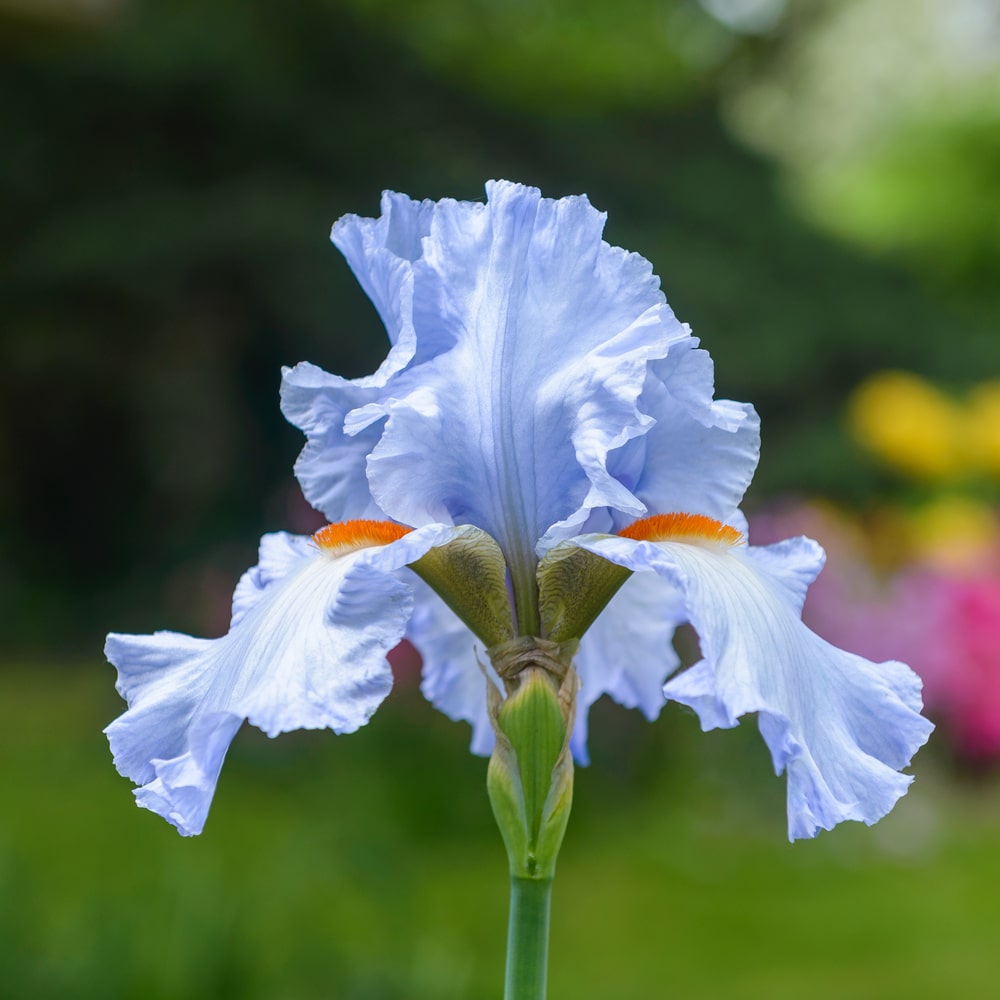Fresh German bearded iris rhizomes just came in so here are a few interesting facts about these beautiful perennials.
- The word ‘iris’ come from the Greek word for ‘rainbow.’ Since iris come in such a wide variety of colors, that‘s pretty appropriate.
- There is a Fresco painting of iris on the island of Crete that dates back to 2100 B.C., so they’ve obviously been around a while.
- Other members of the Iridaceae (the iris family) include freesias, crocus, blackberry lilies, and gladiolus.
- Iris are perennials and grow as either bulbs or rhizomes—a thick stem which grows both top growth and roots. German bearded iris grew from rhizomes.
- Some iris rhizomes are grown and processed as Orris root. The rhizomes are dried, then aged for several years, and ground into a powder, that has a violet-like aroma. The powder is used in perfumes, cosmetics and certain brands of gin.
- Egyptians believed the three upright petals of the iris stood for faith, wisdom, and valor.
- The French King Clovis the First was said to have used the iris as his inspiration for the fleur-de-lis in the early 500s.
- In the United States, iris date back to the 1600s brought over to Virginia by European settlers.
Bearded iris are easy to grow! All they need is a sunny and well-drained area. The rhizomes come with a stem with leaves at the top and roots on the bottom. Plant with the roots covered and the top half of the rhizome exposed to light and air.
Be sure not to mulch over the exposed stem or allow leaves and debris to collect there and never plant near in-ground sprinklers.
Top-dress with a little Bulb-tone when you plant in late summer/early fall. Top-dress again in early spring when the new leaves first appear. Once they’ve finished blooming, check them periodically to be sure the tops of the rhizomes are clear of debris. Water occasionally if we happen to be in a drought.
There are varieties of bearded iris that bloom in spring and again in late summer. These re-bloomers are every bit as easy to grow like the others. For re-bloomers, feed lightly after their first bloom and be sure to keep watered (once a week is sufficient) until their second bloom. Because re-bloomers need to be watered every week and regular iris less often, it’s best to plant them in different areas.
Things that can affect a second bloom are forgetting to water during droughts, failing to keep weeds or debris from covering the top of a rhizome, or a prolonged hot spell in which night temperatures are over the upper 70’s.
Right now we have a great selection of both regular and re-blooming iris. Come in and let me help you paint your garden a rainbow of colors.

